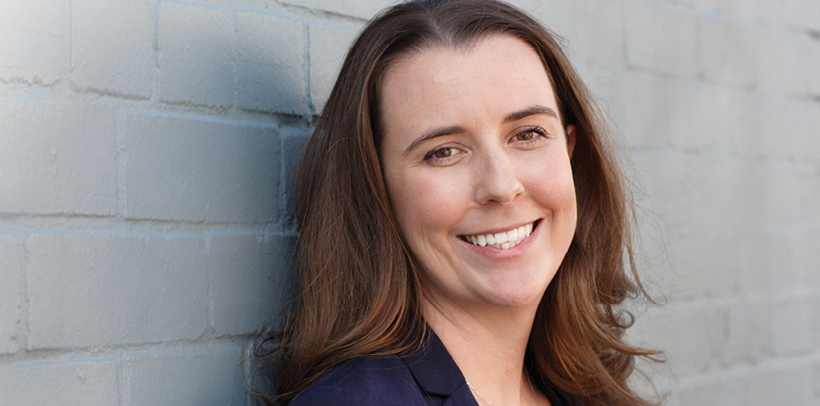The association’s Diversity in Medicine award-winner wants to see an AMA that truly represents all the medical workforce and all our community in all its diversity.
Recently, on 3 August 2024, I had the honour of being one of two recipients of the AMA Diversity in Medicine Award 2024.
The AMA very kindly invited me to the presentation ceremony on the Gold Coast where Professor Steve Robson, another Canberra medico, presented me with the award.
The organisers hadn’t actually set aside any time for an acceptance speech and seemed rather surprised when I told them I’d prepared a little speech and intended to give it. To their credit, they acquiesced. I told the assembled members that I saw the award as a recognition of diversity in our community and in our health workforce.
I also told them that my work has increasingly involved assessing and providing gender-affirming care. I then gave a short vignette of two new patients I’d seen the week I was told I’d received the award.
One was a 13-year-old girl who had socially transitioned when she moved to high school. None of her new schoolmates knew she was trans. She was terrified about what she thought was happening to her physically and cried when I asked her about what changes she’d noticed.
Another was a man in his 60s who’d recently retired and finally had the time and space to think about gender transition. I was the first person he’d ever told the story of how he used to dress up in his mother’s clothes as a child but gave up that dream when he grew tall and broad. And now, after marriage and kids and work, he was finally coming back to that dream again, afraid that it was too late but yearning to have another chance.
I hadn’t been a member of the AMA for most of the early part of my medical career. I ran a general practice that provided care for a lot of the most disadvantaged and marginalised people in Canberra – people with drug dependencies, people with complex mental health problems, the LGBTQIA+ community, people with HIV, refugees and sex workers.
The AMA had an image as a socially conservative organisation that was mainly focused on doctors’ remuneration and privileges and especially the non-GP specialists. Both their apparent social ethos as well as the focus of their energies didn’t appeal to me.
I’m not the only one who felt that way. The other day, I spoke to a GP friend in Melbourne who also said that his membership of the AMA had been erratic for exactly the same reasons.
Eventually, my practice manager persuaded me to join to be in the loop with regard to the AMA’s recommended fees as well as what was happening in medical politics.
The morning after my award presentation at the AMA conference, I attended a meeting of the AMA members. At this meeting, various motions which had been put forward by AMA members were voted on. This was the first time I’d actually attended an AMA annual conference. And there were various things I learned from that meeting that were eye-opening.
First, not all the motions that had been submitted were actually discussed at the meeting. The Federal Council looks at all potential motions and then selects the ones to come before the meeting.
Second, only voting delegates could vote. Ordinary full fee-paying members like me could contribute to the discussion but could not vote. I don’t know who exactly the voting delegates are but I think there are representatives of the different specialties as well as selected delegates from each state and territory AMA branch.
Third, the vote is non-binding. After each motion is voted on, the motion goes back to Federal Council which then decides how they want to deal with the motion and their decision is independent of the voting result.
Finally, the president and vice president of the AMA are selected by the Federal Council. Ordinary members have no say and no vote in the matter.
I started this article by saying that I received the AMA Diversity in Medicine 2024 award. Being recognised as a champion of diversity by the AMA, I am using this prerogative to say why I found all these processes at the AMA highly unsettling, and to argue for change.
These are the sort of processes an organisation puts in place when the elite that controls the organisation wants to retain control and to put in place a semblance of consultation.
- Control the agenda of the meeting by controlling what gets discussed;
- Control the voting body by limiting voting to selected delegates;
- Extend that control further by making the voting outcome non-binding;
- Perpetuate that control by making sure that the leaders of the organisation are chosen by an elite body.
A lot of AMA members probably see no problem with how things are done in the AMA. They would argue that the AMA has been one of the more successful professional lobbying organisations in Australia and feel that any change may imperil its cohesion and effectiveness.
But sometimes, that veneer of success can hide the malaise within.
Change is an immutable part of life.
By limiting its positions of power to a selected elite, the AMA risks seeing the world from a fixed perspective only. If the AMA is to truly continue to represent the medical workforce in all its diversity, it needs to give all of them access to decision-making.
Maybe start by giving all the membership a vote for the president and vice president.
One of the functions of the AMA is to speak to government about issues that concern the medical community. When the AMA has such a heavily managed democracy, it makes it more difficult for the AMA to say to government that it truly represents the medical community, let alone all its members.
And without all its members, where is the strength of the AMA?
Traditionally, the AMA has seemed to have a primary focus on doctors’ income and privileges. While that is obviously an important role it plays on behalf of doctors, the AMA also needs to be aware of how this kind of advocacy on behalf of what is seen as a privileged group is seen by government and community when so many people feel they are doing it tough.
I think the AMA has some recognition of the need to advocate on behalf of equity in healthcare in the community. Extending suffrage within the AMA itself would then be a part of the same ethos.
Related
I had heard that the membership numbers of the AMA have remained static for many years, approximately something like 50% of the medical workforce. Maybe the AMA has done surveys to look at this but I think that what I said earlier about my perceptions of the AMA are similar to how many other doctors see it.
And maybe that’s why many doctors don’t see themselves joining the AMA.
I often find it hard to keep my mouth shut at meetings. And so it was that at that meeting.
I stood up to speak in favour of universal suffrage for all AMA members and to decry the entrenched power of “older white men”. I’ve spoken to several people since who privately agree with me and thanked me for speaking out but were not in a position themselves to say so publicly.
I am just another ordinary fee-paying member of the AMA. I have never held any position of responsibility in the AMA. I do want the AMA to prosper and to truly be a representative organisation of the medical workforce.
But I want to see a different AMA – an AMA that truly represents all the medical workforce and all our community in all its diversity. And to do that, the AMA needs to open its doors to all.
Dr Clara Tuck Meng Soo is a GP based in the ACT. She is the immediate past president of AusPATH.




